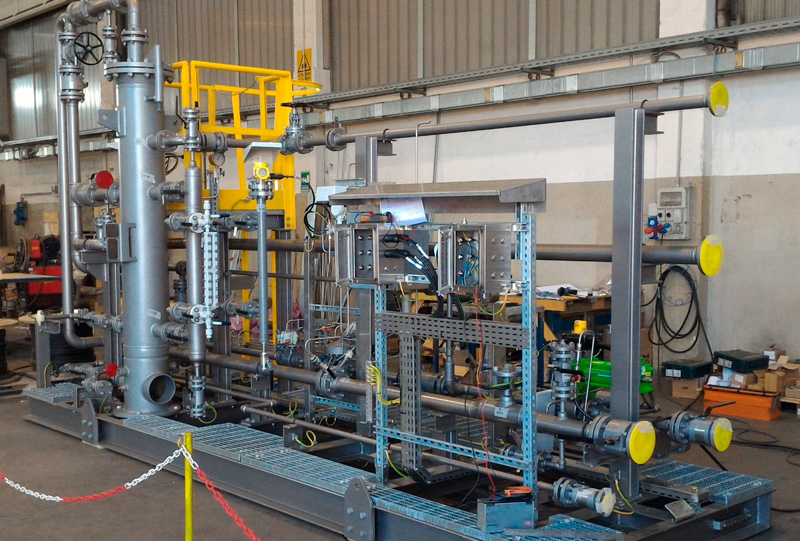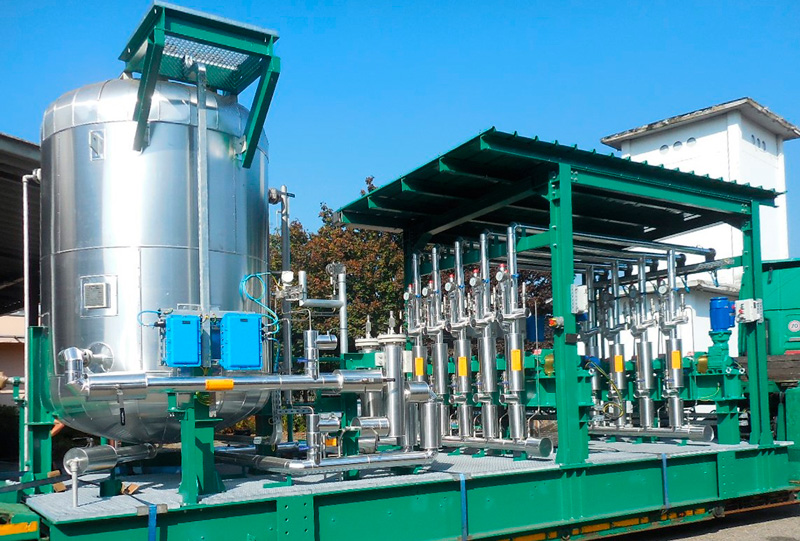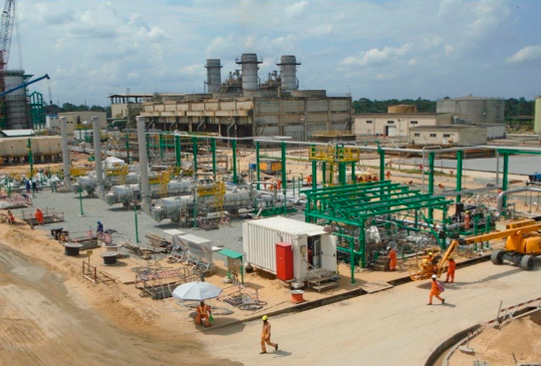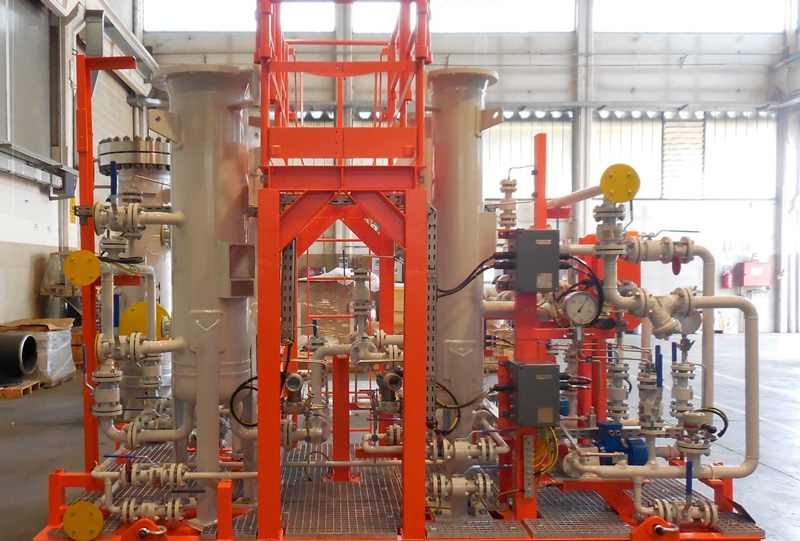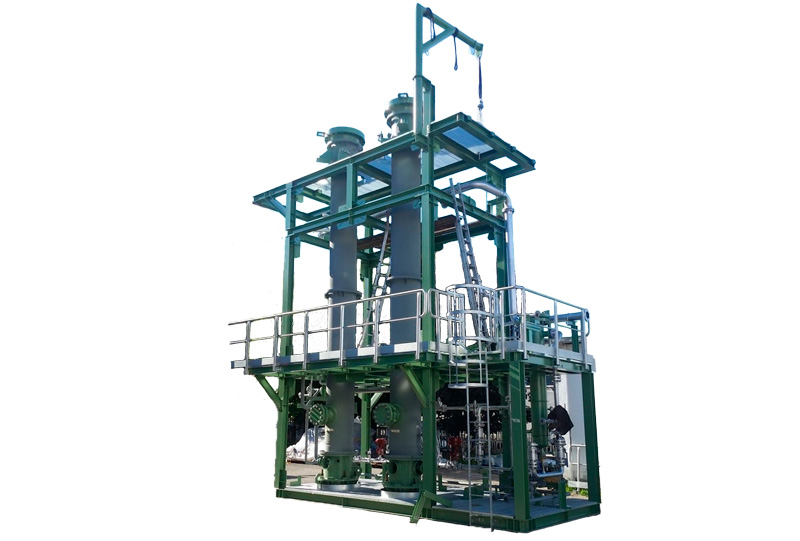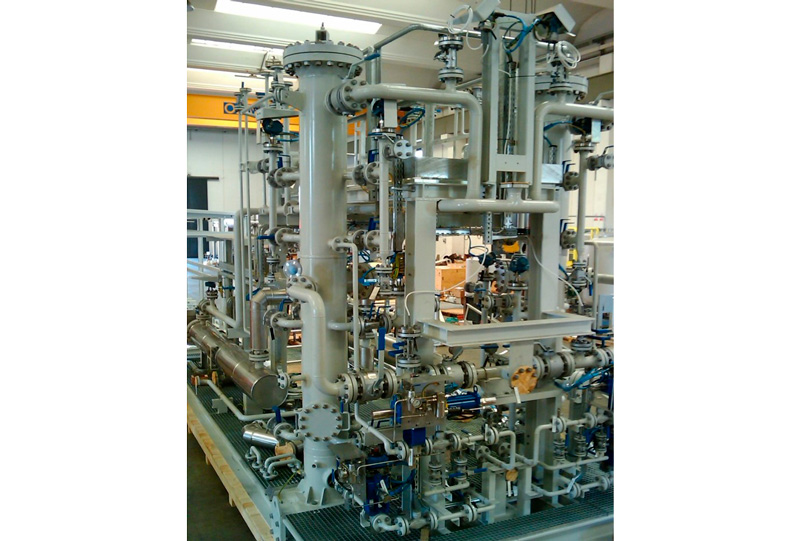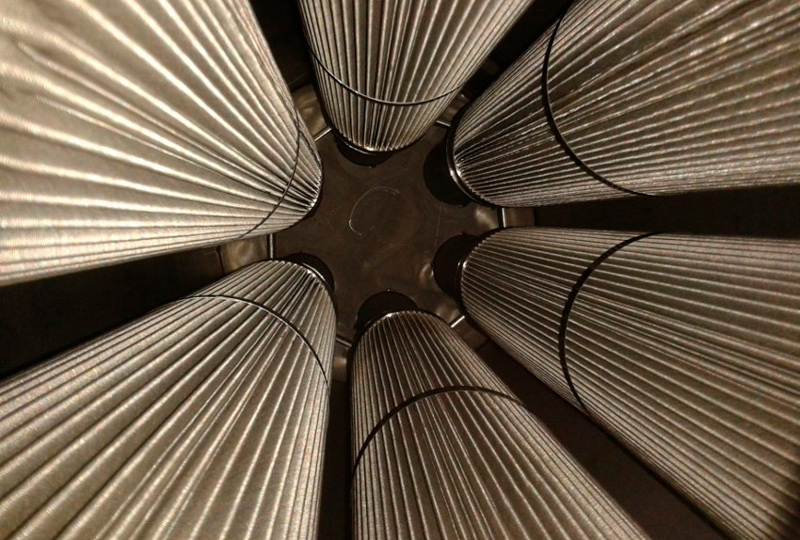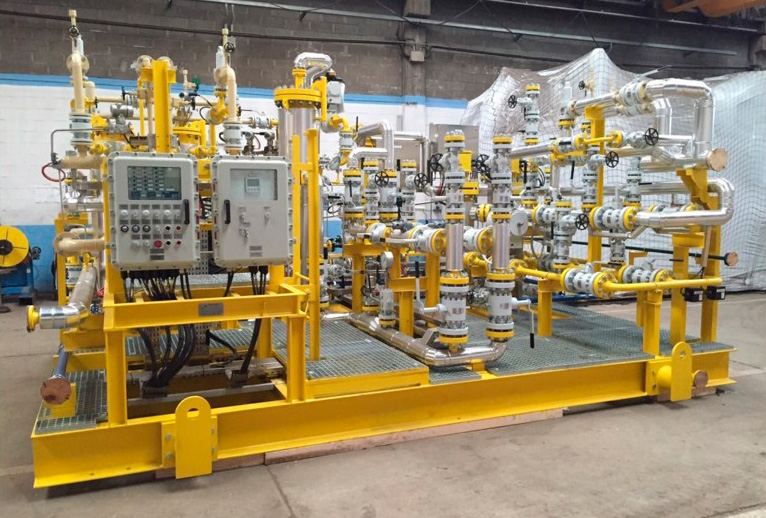Membrane-type Impurities Removal Units
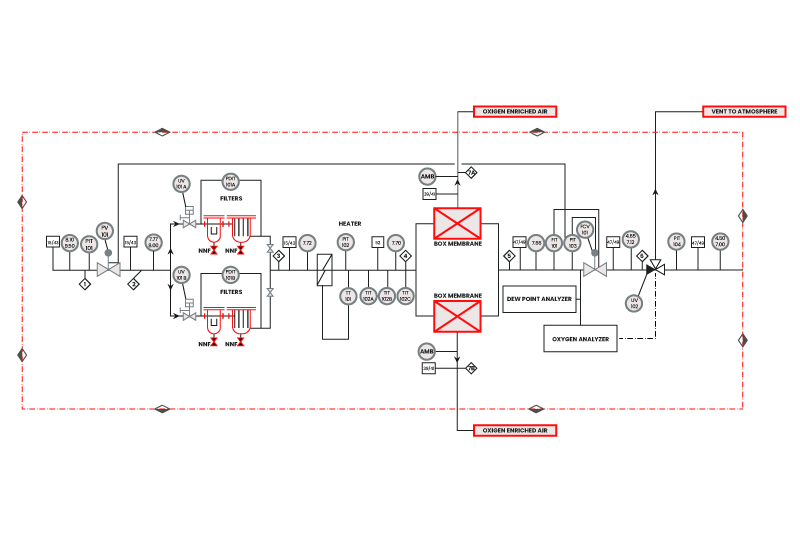
Applications
Gas separation by membranes process
Basic Process Description
The membranes are produced in the form of hollow fibres. Gas separation membranes work on the principle of selective permeation through a membrane surface. The difference between the partial pressure of the gas on the internal side of the membrane and external side. If greater this difference, the greater the permeation of gas through the membrane. The permeation rate of each gas depends on its diffusion rate in the membrane. Gases with higher diffusion rate and lower molecular size penetrate the membrane faster than large, lesser diffusion gases. Each membrane module contains millions of hollow fibres. The high density of the fibre bundle provides a vast membrane surface area through which the air components permeate with different velocities.
In case of nitrogen generation units, nitrogen has a lower permeation velocity than oxygen, CO2 and water vapour. Hence these gases pass through the membrane and vented to atmosphere at the safe location (vented gas to atmosphere is enriched with oxygen). Only nitrogen comes out of the membrane.
The main components of nitrogen generations are: Inlet Filters, Heaters and Membranes.
The unit is completed with interconnecting piping, valves, steelworks, instrumentation and control systems.
Depending upon the extension of the scope of supply, the system may be provided with additional facilities such as air compressors, dryer unit and nitrogen receiver.



